Top Things to Know Before Buying White Moths for Your Garden
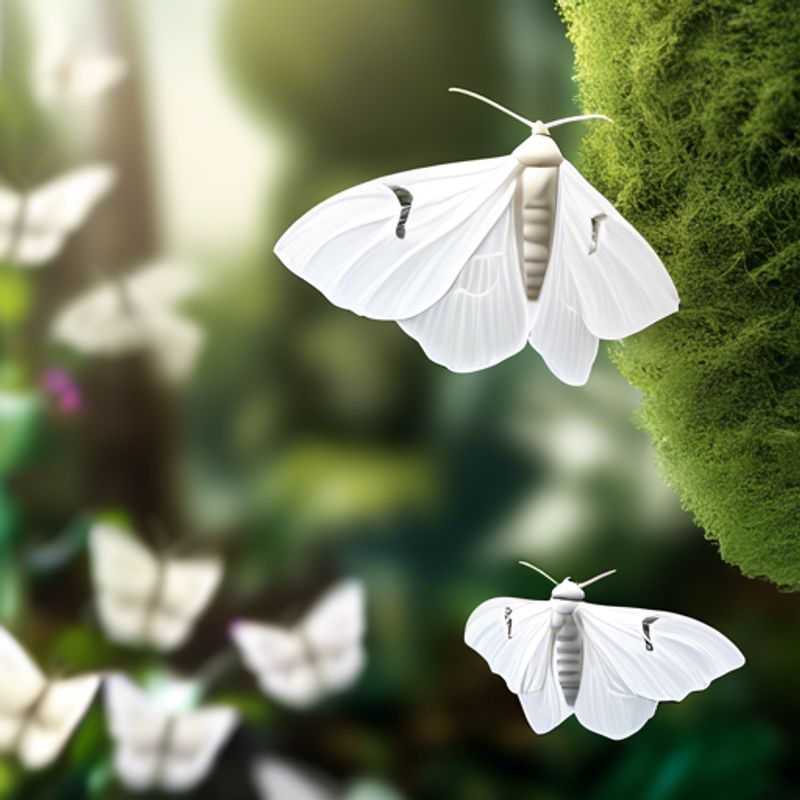
Before You Buy White Moths: A Guide to Responsible Gardening
Ah, the delicate flutter of white moths in the garden. A beautiful sight, but before you let these winged wonders grace your space, there's a bit of homework to do. You see, understanding the nuances of these fluttering creatures can make the difference between a harmonious garden ecosystem and an unwanted infestation.

Unveiling the Secrets of White Moths in Your Garden: Habitat and Behavior
White moths, often fluttering around our gardens, are fascinating creatures with specific habitat preferences and intriguing behaviors. Understanding their world can help us coexist with them, minimizing any potential conflicts.
Most white moths are drawn to flowering plants, especially those with sweet nectar. You'll frequently spot them around roses, honeysuckle, and lavender. Their attraction to these flowers is deeply rooted in their need for sustenance - they feed on the nectar, vital for energy and reproduction.
Some white moths, like the Cabbage White, are attracted to leafy vegetables like cabbage, kale, and broccoli. These moths are more likely to be considered pests, as their caterpillars (often called "worms") feed on these plants, causing damage.
White moths are nocturnal creatures, meaning they are most active at night. You'll rarely see them during the day, as they prefer to rest under leaves or within the dense foliage of their chosen plants. They are attracted to light sources, which is why you might see them flitting around porch lights or streetlamps.
To minimize the presence of white moths that might damage your garden plants, consider using natural deterrents like planting aromatic herbs such as lavender, rosemary, and thyme. These plants naturally repel moths, offering a safer alternative to chemical pesticides.
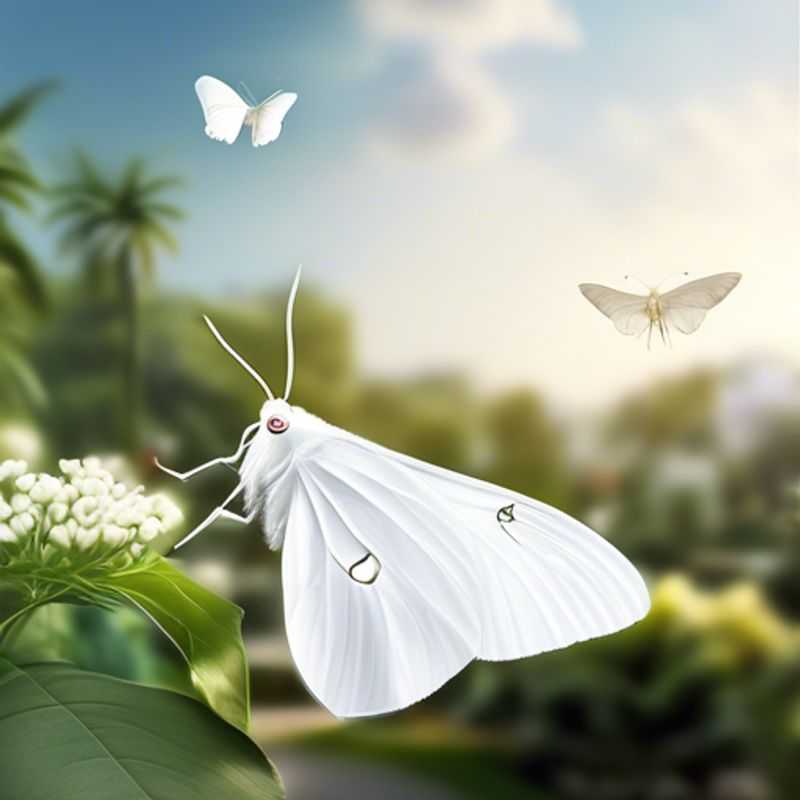
Unveiling the White Moths in Your Backyard: A Guide to Local Species
Researching the specific species of white moths in your area can be both a fascinating and enlightening endeavor. Start by identifying common white moth species, such as the Common White Moth (Hypsopygia costalis) and the White-lined Sphinx Moth (Hyles lineata). These species often thrive in various habitats, from gardens to woodlands, making them accessible for observation. Field guides or local biodiversity databases can provide essential identification tips.
For a more structured approach, consider joining local entomology clubs or participating in community science projects that focus on moths. These activities often include workshops and guided observations, which can enhance your understanding of their life cycles and habitats. Additionally, traveling to natural reserves known for rich biodiversity may yield a wider variety of species for research.
When estimating a plan for your research, consider potential costs associated with field equipment like nets, traps, and cameras, as well as any fees for accessing protected areas. Engaging in online courses or purchasing specialized literature can also be beneficial for deepening your knowledge. Remember to document your findings thoroughly, as this will contribute to ongoing research and conservation efforts in your area.
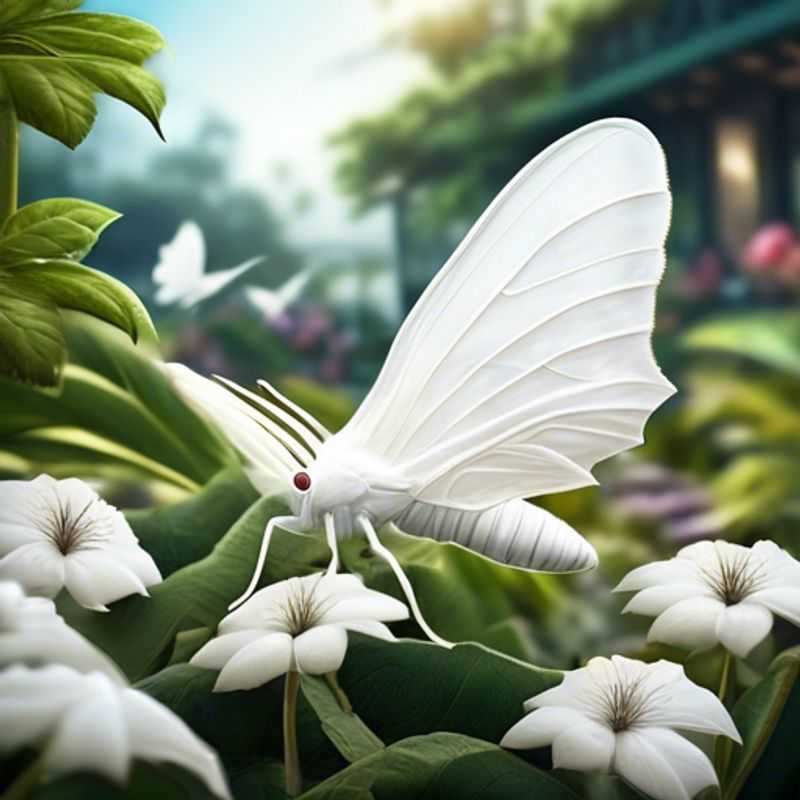
White Moths: Friend or Foe? Identifying Pests from Beneficial Insects
Determining whether white moths are pests or beneficial insects depends entirely on the species in question. There is no single answer, as the classification changes from moth to moth.
Some white moths, like the clothes moth, are known pests that can damage fabrics and carpets. Others, like the Luna moth, are considered beneficial because their caterpillars feed on trees, which can help control pest populations.
It's crucial to identify the specific white moth you're encountering to determine its role in your environment. If you suspect a pest infestation, consult a pest control professional for identification and treatment.
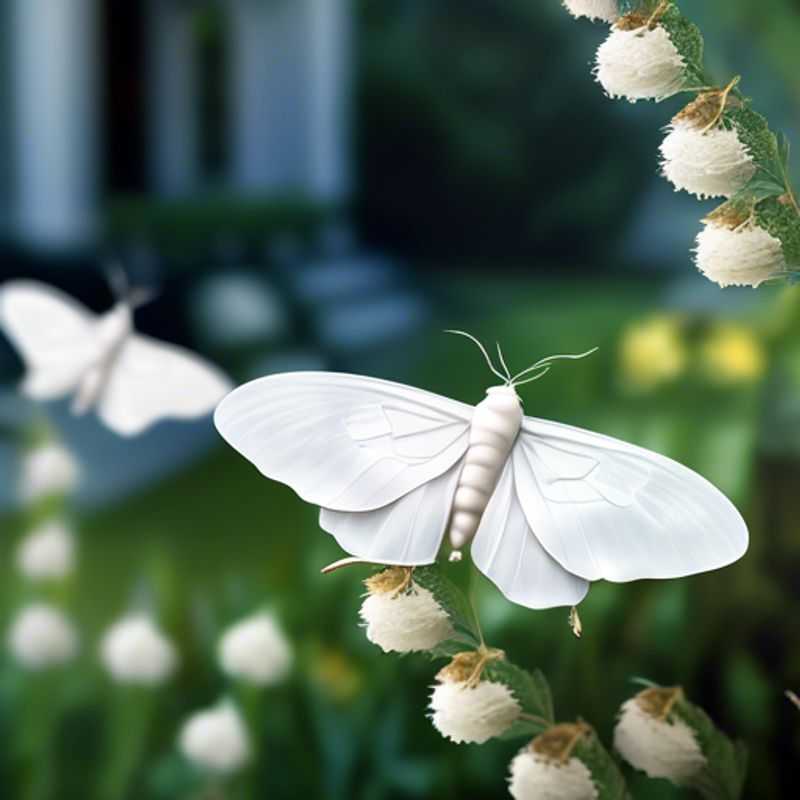
Unveiling the Life Cycle and Reproduction Secrets of White Moths
White moths, like other moths, undergo a complete metamorphosis, a fascinating process involving four distinct stages: egg, larva (caterpillar), pupa, and adult. The lifecycle begins with eggs, usually laid in clusters on the underside of leaves, and hatch into tiny, voracious caterpillars.
The caterpillars feed on plants, growing rapidly, shedding their skin several times as they molt. Eventually, they enter the pupal stage, forming a chrysalis, a hardened protective casing, often attached to a branch or leaf. Inside the chrysalis, a remarkable transformation occurs, culminating in the emergence of an adult moth.
Adult white moths, with their delicate wings and feathery antennae, are primarily focused on reproduction. They rely on pheromones, chemical signals, to attract mates. Once paired, females lay eggs, restarting the cycle. Each species has specific preferences for host plants and lays eggs in locations suitable for the developing caterpillars.
The life cycle duration varies depending on the species and environmental conditions. Factors like temperature, food availability, and predator pressure influence the length of each stage. Some white moths may have multiple generations in a year, while others may have just one.
Understanding the lifecycle and reproduction patterns of white moths is crucial for managing their populations, particularly in agricultural settings. Recognizing their host plants and identifying their egg clusters can aid in implementing control measures, such as using natural predators or biological insecticides. However, it's essential to remember that many white moths play vital roles in ecosystems, acting as pollinators and serving as food for other animals.
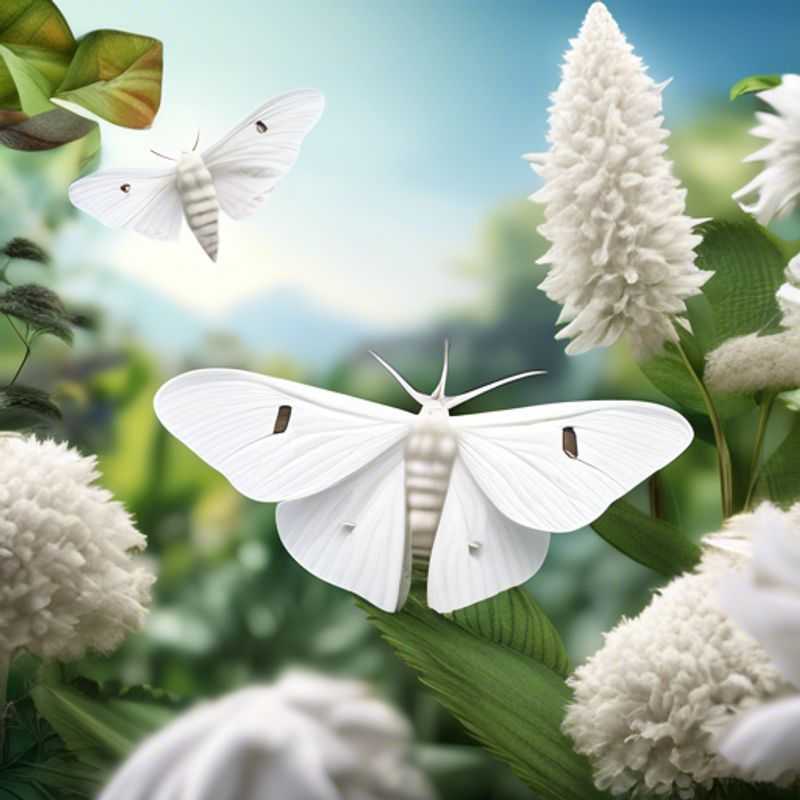
Unveiling the Feast: Food Sources and Plant Preferences of White Moths
The term "white moth" encompasses a vast array of moth species, each with its own dietary preferences. It's crucial to identify the specific moth species you're interested in to determine its preferred food sources. However, we can discuss some common food sources for white moths, keeping in mind that this is a general overview. Many white moths are attracted to sweet, sugary substances, such as nectar from flowers, overripe fruits, and fermented liquids. This is particularly true for species that are active at night.
Certain white moths are known to be attracted to specific plants. For instance, the diamondback moth (Plutella xylostella) is a notorious pest of cruciferous crops like broccoli, cauliflower, and cabbage. The codling moth (Cydia pomonella) prefers apple trees. Other white moths may be attracted to specific plants based on their scent, color, or the presence of specific nutrients.
To truly identify the preferred plants for a specific white moth, a thorough investigation is required. A helpful starting point is consulting online resources such as university entomology websites, databases of insect-plant relationships, and scientific publications. It's also essential to be aware of the potential impacts of invasive species and the importance of maintaining a healthy ecosystem. If you're dealing with a moth infestation, consider contacting local pest control experts for tailored advice and solutions.
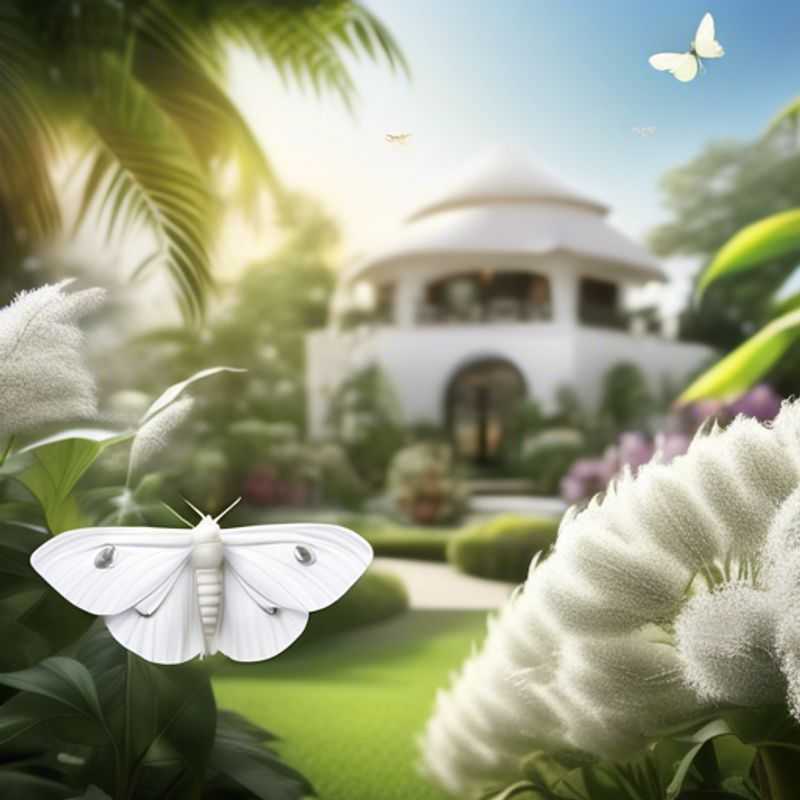
Think Before You Flick: The Ecosystem Impact of Removing White Moths
White moths, often considered harmless, play a crucial role in the delicate balance of our ecosystem. Before considering their removal, it's essential to understand their impact on the environment.
Pollination is one of the most critical roles they play. White moths, like many other moth species, are active pollinators, contributing to the reproduction of plants, including those that are vital for food production. They act as natural pest control agents, feeding on various insects and helping to regulate populations. They are also a crucial food source for other animals, such as birds and bats.
Removing white moths without careful consideration can have unforeseen consequences. It could disrupt the delicate balance of the food web, leading to an increase in pest populations and a decline in beneficial insects. This could also negatively impact plant diversity and potentially disrupt the ecosystem's overall stability.
Before taking any action, it's essential to consult with experts in the field of ecology or entomology. They can provide valuable insights into the specific role of white moths in your local ecosystem and suggest alternative solutions to any perceived issues.
Remember, every organism has a purpose, and disrupting the natural order can have unpredictable and potentially harmful consequences. By understanding the interconnectedness of our ecosystem, we can make informed decisions that protect both the environment and the species that inhabit it.
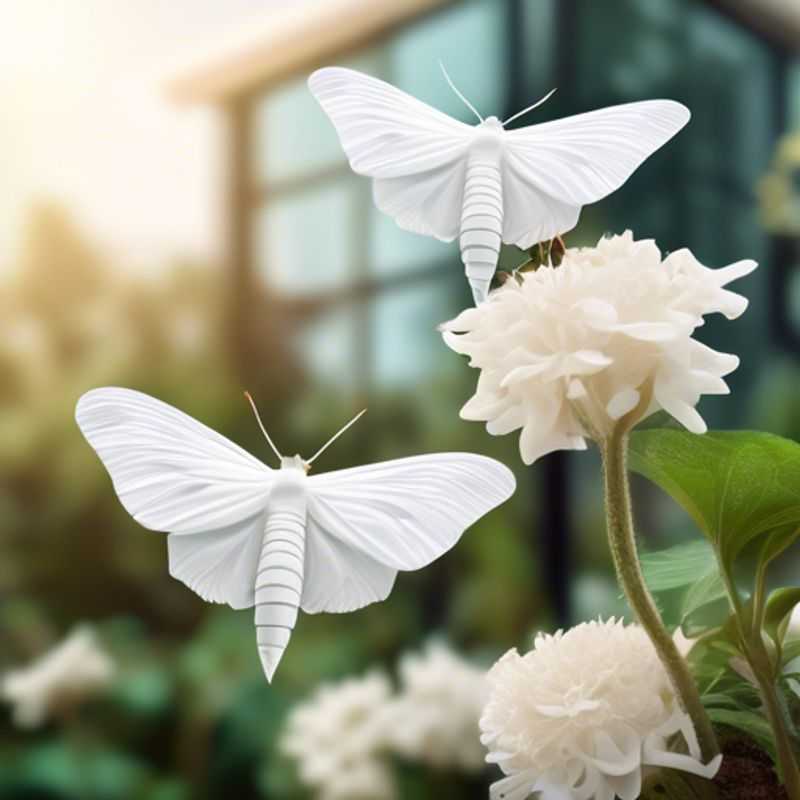
Natural & Organic White Moth Control: A Gentle Approach to Garden Harmony
White moths, while often beautiful, can quickly become a nuisance in gardens and homes. Thankfully, there are effective and natural ways to manage their populations without resorting to harmful chemicals.
Start with Prevention:
One of the most effective ways to reduce white moth populations is to prevent them from entering your home or garden. This can be achieved by sealing cracks and gaps in windows and doors, using screens on windows, and keeping outdoor lights off at night, as moths are attracted to light.
Attract Natural Predators:
A diverse ecosystem in your garden attracts natural predators of moths, like birds, bats, and predatory insects like lacewings. Creating a welcoming environment for these creatures helps to keep moth populations in check. This might involve planting a variety of native flowers and shrubs, providing water sources for birds, and avoiding the use of broad-spectrum insecticides that can harm beneficial insects.
Use Traps:
Several traps are available to capture white moths, including pheromone traps that attract male moths, and sticky traps that capture both males and females. Pheromone traps use scents specific to the moth species to lure them, while sticky traps are designed to capture them with a sticky adhesive.
Consider Organic Insecticides:
If moth populations are a serious problem, you may consider using organic insecticides. Diatomaceous earth, a natural powder made from fossilized algae, is effective at killing insects. Neem oil, derived from the neem tree, is another option that has insecticidal properties. When using these products, always follow the instructions on the label carefully and avoid using them when children or pets are present.
Don't Forget Routine Maintenance:
Regularly inspect your garden and home for signs of moth infestation. If you find webbing or eggs, remove them promptly. Vacuuming regularly can also help to remove moths and their eggs from your home.
Remember, managing white moth populations is an ongoing process. By implementing these natural and organic methods, you can create a healthy and balanced environment for your home and garden while keeping moth populations under control.
